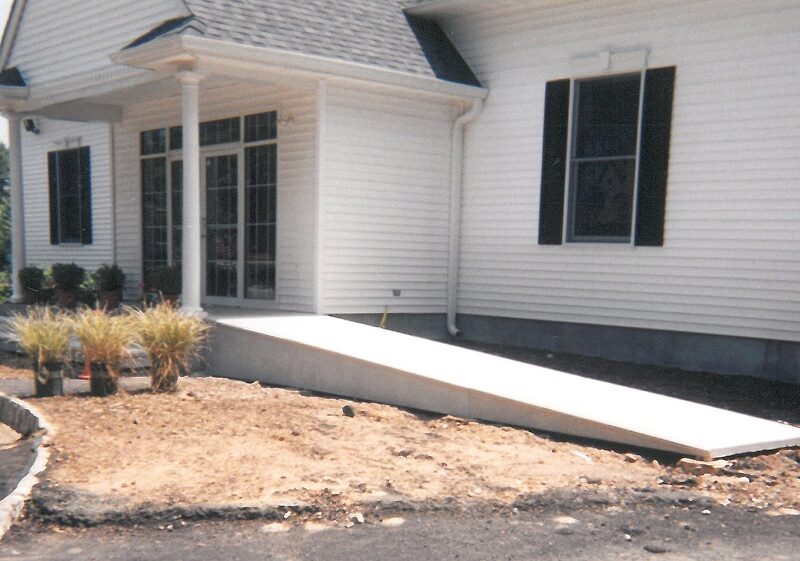Handicap ramp slope means the angle of your ramp and how steep it is.
If your home has a handicap ramp, then you should know how to choose the right slope for your home’s needs.
A ramp is essential if you or someone you’ve welcomed into your home has mobility issues.
Ramps can be used for wheelchairs, walkers, and scooters. They can be made out of wood, metal, or plastic. If your loved one needs help getting up and down the stairs, then a wheelchair ramp may be the solution.
A good rule of thumb when purchasing a wheelchair ramp is that it should not have inclines greater than 5 degrees in any direction (this will make it easier for someone using their hands and feet). Wheelchair ramps are also known to have humps at the top and bottom, making them less accessible to those who use walkers or scooters.
If you have a long-term guest that will be living with you for an extended amount of time, then hardening the ramp may be necessary.
If you have a long-term guest that will be living with you for an extended amount of time, then hardening the ramp may be necessary. Hardening the ramp can be done by adding a solid surface to the top of it or adding handrails on either side of the ramp.
A solid surface is important for safety reasons, but so are handrails! Adding handrails in addition to making your ramp more durable will help prevent any injuries to your guests as well as keep them safe while walking up and down your stairs.
Most handicap ramps need to be built at a 1:12 ratio.
Most handicap ramps need to be built at a 1:12 ratio. This means that for every foot of elevation change, you need to move the ramp 1 foot horizontally. So if you want your ramp to go from ground level up onto your porch, it should rise no more than 12 inches vertically—none of this “just enough” stuff! If you’re building a longer ramp that’s going straight up or down, you may be able to get away with a slightly steeper slope than 1:12 and still meet ADA guidelines (see below). But don’t go crazy; anything steeper than 1:10 is not recommended by the Americans with Disabilities Act (ADA).
The slope determines the ramp’s length.
The handicap ramp slope is the most important factor in determining your ramp’s length. The steeper it is, the longer your ramp needs to accommodate that elevation change.
The slope also determines how much material you’ll need for construction and how steeply you should build it. If your slope has a 30-degree angle (1:3), then each foot of the ramp will need 18 inches of material (1/3 x 1 foot). A 1:12 (1/8) slope requires 4 feet of material for every 12 inches of length—or 3 times as much!
Avoid steep slopes.
The first thing to know is that you should avoid steep slopes. Slopes are measured on a vertical plane, with the horizontal plane being set at 0%. The standard slope of most ramps is between 2% and 5%. If this seems too steep for your needs, it’s probably because it is! It may be worth looking into a different ramp if you need one with an incline of less than 2%.
If you do choose a ramp with a steeper incline, there can be some consequences. In addition to taking longer to climb, it could also make navigating the ramp more difficult for those who use wheelchairs or scooters. This can lead to falls and injuries when people lose their balance on the steep slope and don’t have enough momentum from going up to carry them down safely without falling off the end of it.
Get an engineer’s opinion of your ramp plans.
Getting an engineer’s opinion of your ramp plans is best practice. The ramp should be built by a professional, with correct specifications, and designed to last. This means that it should withstand heavy traffic.
A professional will ensure that the ramp is safe, stable, and strong enough to withstand any amount of weight or pressure.
It’s also important to consider the material from which you build your ramp. Different types of materials have different properties and strengths, so it’s important to choose one that will suit your needs. For example, concrete is popular for ramps because it’s strong and durable but also heavy and expensive.
Conclusion
Hopefully, this article has helped you better grasp the importance of ramp slope. It’s always important to make sure that your home is safe and accessible for everyone, but it’s especially essential if someone in your household has mobility issues. A handicap ramp with a steep slope can lead to injuries or even death if someone falls off of it. Therefore, it’s very important that you have an experienced contractor do the work for you so that everything looks great and works well!

